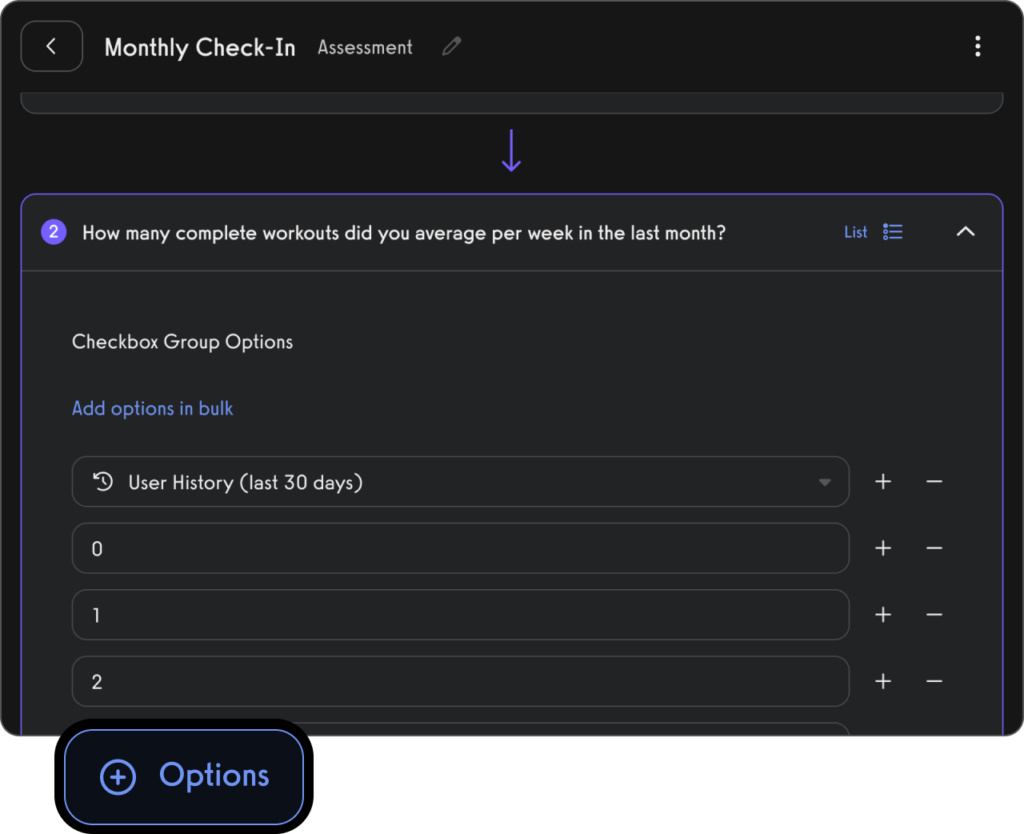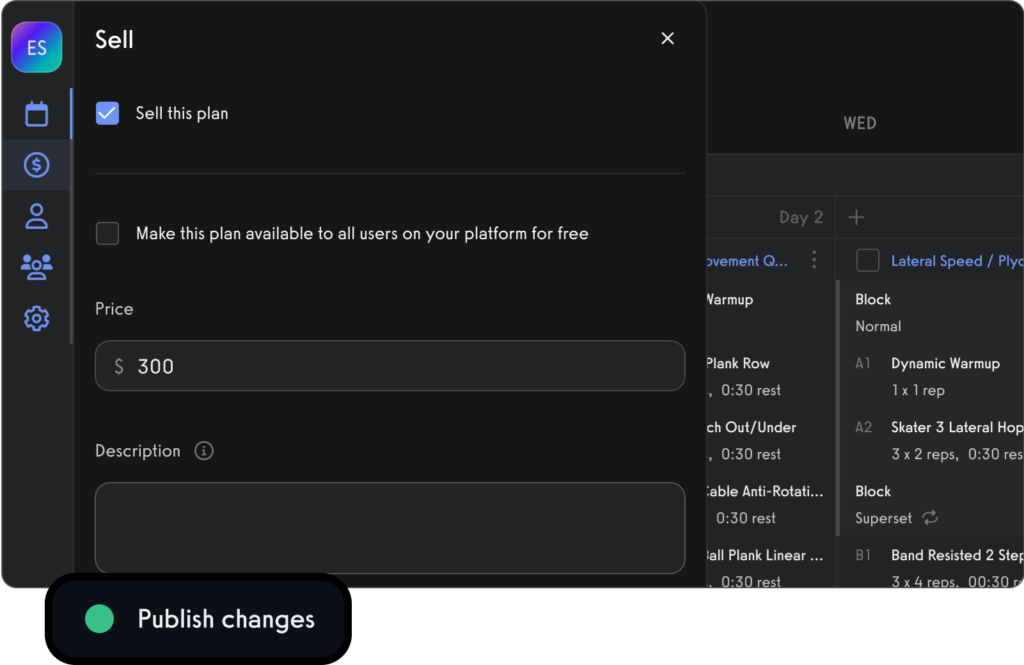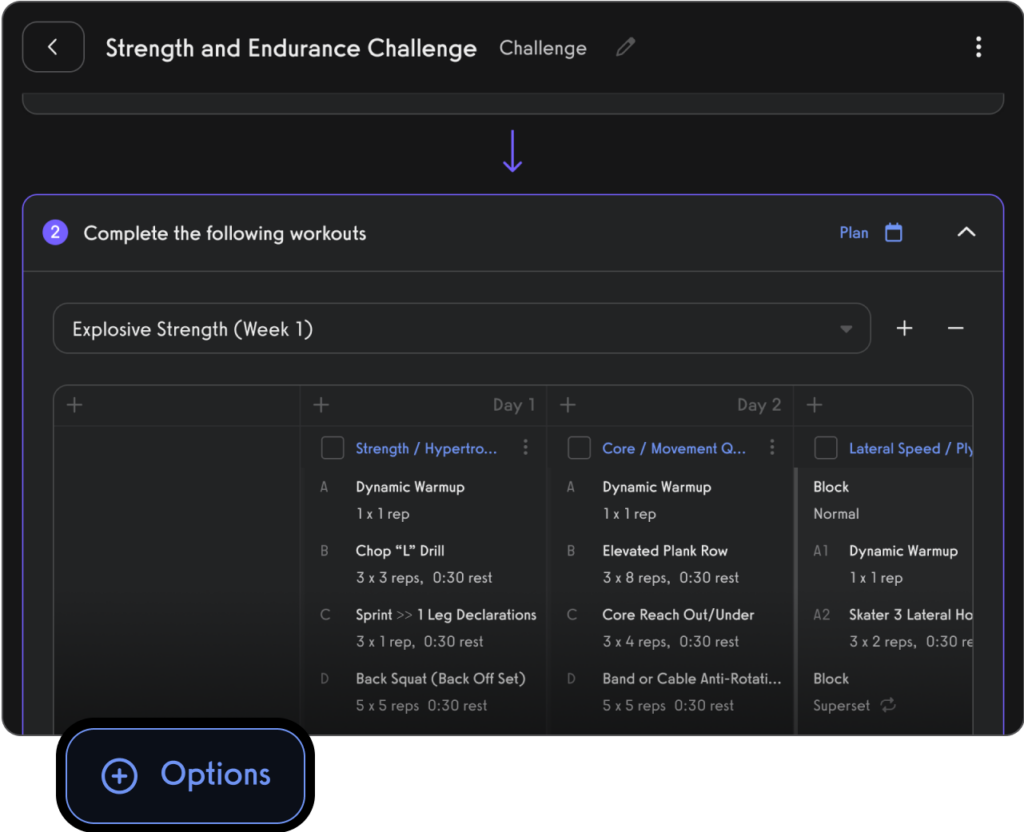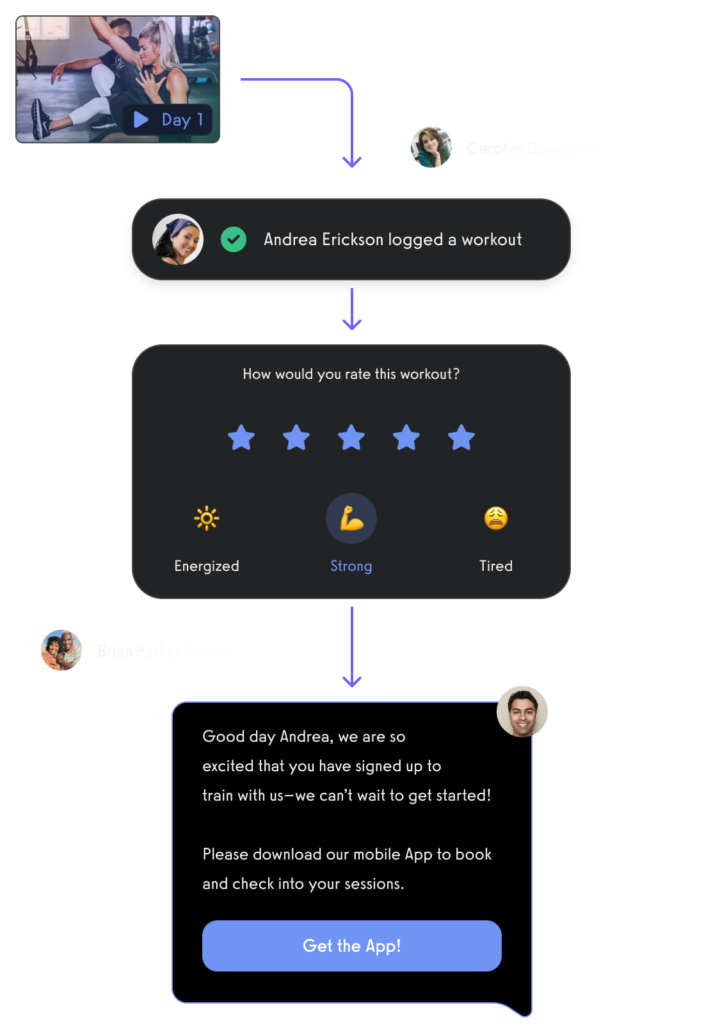How to Motivate Clients to Change Health Behaviors (20+ Tips)
Learn how to motivate clients to change health behaviors by understanding their needs, setting achievable goals, and providing positive reinforcement.

The job of a personal trainer doesn’t stop with creating and delivering a safe and effective workout program for clients. Personal trainers also have an important role in helping clients change and improve health behaviors to meet their health and fitness goals. Personal trainers are an important “motivational coach” for clients to help them achieve optimal health and wellbeing.
- Personal trainers play a big role in motivating and encouraging clients to improve or change health behaviors.
- There are many different strategies you can use with clients to help them overcome barriers and be successful at reaching their health and fitness goals.
- Goal setting, use of behavior change theories, and providing encouragement are great tips for coaching clients.

Read on for 20 of the best tips to motivate clients to change or improve health behaviors. Learn some of the best ways to promote a healthy lifestyle with your personal training clients and then see why using the best personal training software and the best gym management software to help you motivate your personal training clients can help you learn how to motivate personal training clients with professional grade software tools.
Offer habit tracking to help them build healthy habits.

Send fitness assessments to check in and keep them accountable.

Sell workout plans online or sell personal training online.

Run online fitness challenges.

Create and sell fitness memberships, products, and digital offers like macro guides, healthy tips, workout plans, and other fitness and nutrition products to help your clients build healthy behaviors.

Manage, message, and market to your leads and followers. Motivate them with inspiring messages and accountability.

All from your very own custom branded fitness apps.


#1 – Help Your Client Set SMART Goals
SMART goals are a great way to help your client set an attainable goal to work toward in order to change some behavior. SMART goals should be:
- Specific
- Measurable
- Action-oriented
- Realistic or relevant
- Timely or time-specific
An example of good SMART goals would be “I will do two 20-minute yoga videos on YouTube each week, one on Tuesday morning and one on Thursday morning.” Another example would be “I am going to make half my plate fruits and vegetables at two meals, five days a week.”
SMART goals can be short-term or long-term, as long as they have enough details to be SMART. SMART goals set your clients up to be successful. Once a client has reached and maintained their SMART goal, you can work together on the next SMART goal.
Clients might need help forming a SMART goal, especially if their goal is to lose weight or to get stronger. Encourage them to think about SMART goals that will help them get to their overall goal of weight loss or getting stronger. A SMART goal around healthy eating or physical activity will help them meet their bigger overall goal.
A reward system might also be part of goal setting. If a client meets a certain goal, maybe they reward themselves with a massage or new workout clothes. The video below from ACE Fitness has some tips for helping clients set SMART goals.
#2 – Ask Them “Why”
Ask your clients what their “why” is, meaning:
- Why do they want to exercise?
- Why do they want to eat healthily?
- Why are they working with a personal trainer?
Not because someone else told them to or because they know they should, but really why? Is it to make it easier to play with grandkids? Is it to lose weight? Is it so they can just move better during normal daily activities (get in and out of their car easier, carry groceries, climb stairs, etc). Is it so they can run faster?
Once you know the “why” you can plan appropriate workouts and encourage clients to be more active and to eat healthier. Once you understand why they want to change or improve health behaviors, you can help them stay motivated to reach their goals.
#3 – Use the Stages of Change Model
The Transtheoretical Model, or also commonly called the Stages of Change Model or the Transtheoretical Model of Change, is one theory that suggests individuals move through stages as they attempt to change behavior. Those stages are:
- Precontemplation
- Contemplation
- Preparation
- Action
- Maintenence
- Termination
See the video below for an overview of the Transtheoretical Model or Stages of Change Model.
In the Precontemplation stage, an individual has no intention of changing behavior any time soon. For example, an individual may smoke but have no desire to quit smoking.
Contemplation is the stage when an individual is deciding and intending to make some behavior change within the next six months. They may be weighing the pros and cons and are not be completely ready yet.
Preparation is the stage when someone is ready to make a change within the next month. They recognize the importance and impact of this change and are setting some SMART goals to help with this.
Action means the individual is making progress toward their SMART goals and improving their behavior. This is typically the first six months of a behavior change.
Maintenance is the stage when an individual is continuing to make progress on their behavior change and has been for over six months. An individual may remain in this stage for a long time because the goal is to prevent any regression to earlier stages.
Termination is the final stage when an individual has completely changed the behavior and has no desire to return to unhealthy behaviors. There is no chance for regression to an earlier stage here.
The stages of change are not linear. An individual may be in the preparation stage for a while, move to the action stage, but then fall off the wagon and end up back in the contemplation stage. Work with your clients to determine which stage they are in.
The Transtheoretical Model is not without critics, but it is one way to understand an overall process that we work through to improve or change health behaviors.
#4 – Encourage Them to Move More, Sit Less
Help your clients think about strategies they can use to incorporate daily activity as often as possible. Short bursts of activity can add up over the course of a day.
Can they do some stretches or light activity once an hour when sitting at their desks? Can they move some meetings to a walking meeting? Could they do a 20-minute yoga YouTube video first thing in the morning?
There is also a fairly new concept called exercise or activity snacks. Just like snacks are like a small meal needed to meet the need for food and nutrients in-between meals, activity snacks can help meet activity needs and can be done in small increments between exercise sessions.
An exercise snack can be as little as 30 seconds of stair climbing, 10 chair stands, or a few stretches during the commercial break of your television show. Watch the TedTalk video below for more information about exercise “snacks.”
#5 – Use Motivational Interviewing
Motivational interviewing techniques have their roots in counseling but have shown to be more effective at eliciting behavior change more so than just giving advice. It is a client-centered and supportive approach and utilizes the following principles:
- Express empathy through reflective listening.
- Develop a discrepancy between clients’ goals or values and their current behavior.
- Avoid argument and direct confrontation.
- Adjust to client resistance rather than opposing it directly.
- Support self-efficacy and optimism.
Motivational interviewing focuses on asking open-ended questions, providing affirming statements, and allowing the client to recognize the need for change and persuade themselves that they are capable of making healthy changes.
#6 – Give Examples in Your Own Life
We all struggle with motivation and have our own path when it comes to changing or improving health behaviors. Talk to your clients are your personal experiences. Think of a good story to share with them from your own life when you were struggling with changing behavior or even how you failed if you overcame that failure to be successful.
#7 – Encourage Self-Monitoring
Self-monitoring of behaviors, like keeping a food or exercise diary or log, is an effective tool for behavior change for both nutrition and physical activity behaviors. Clients can keep track of this either on paper, like a calendar or planner, or electronically using their phone or a mobile app. There are a number of mobile apps that allow individuals to track nutrition or physical activity.
The client could choose to share their diary or logs with you, as their trainer, or they may just record them for their own use. It’s up to you and your client on how detailed the self-monitoring should be, how often, and where it will be recorded.
#8 – Create a Roadmap for Them
Just like you wouldn’t go on a road trip without a plan, help your clients by developing a roadmap for success. Turn the SMART goals into manageable steps or a weekly plan.
If their goal is to play with grandchildren, the steps might be that they are doing a yoga class once a week and 10 strength training exercises twice a week. If their goal is to lose weight, maybe the steps are to track their food intake for a week as a baseline for planning a healthy eating plan.
A roadmap gives clients something to guide them and gives you the ability to check-in to see how they are progressing toward their weekly roadmap and SMART goals.
#9 – Perform Fitness Assessments
Assessments are a great baseline tool from which to plan a fitness routine for clients. Sharing these assessments, especially by comparing them to others similar in age and sex using normative charts, is a great way to help clients stay on track to meet their fitness goals.
You can repeat fitness assessments at regular intervals, like every 3 months or 6 months, to show progress and improvement. Seeing progress can be a great way to keep clients motivated. If you provide the clients with either a hard copy or electronic assessment report, they can keep these to see how far they have progressed over time.
Use the best fitness assessment software right inside the Exercise.com platform.

#10 – Discuss Barriers
This can be a simple conversation to understand what the biggest barriers for your client that may prevent them from changing behaviors. You can also ask them what has prevented them from being successful in the past.
Do they have small children at home and are lacking the time to be active? Do they have a spouse that brings in unhealthy treats and they are always tempted to eat them? Do they work 60 hours a week and lack time for physical activity?
By having an honest discussion about the barriers that might prevent them from being successful, you can help them work through some of those situations. You can set up a strategy on how they can be successful even with barriers such as time, temptation, lack of energy, or overall lack of motivation.
#11 – Help Them Identify Environmental or Social Influences on Behavior
Similar to discussing barriers, it helps to identify environmental and social influences on behavior. Let’s say your client is trying to lose weight by exercising regularly and eating healthier but also goes to happy hour once a week where there are fried appetizers and alcoholic drinks flowing. They know this social event is a strong influence on their eating and drinking habits every week.
You can help them problem-solve this situation. Maybe it’s important that they attend this happy hour for networking, but maybe they can have one glass of red wine instead of unlimited fruity cocktails. Maybe they can order a vegetable plate or have a salad first before indulging in unhealthy appetizers.
Another example is that your client drives by a donut store on their way home from your twice-weekly sessions at the health club or fitness center. It’s very tempting to them and they can’t resist stopping for a few donuts for the next day. You might suggest to them taking a different route home to avoid passing by the donut shop so the temptation is minimized.
#12 – Think of Yourself as a “Coach”
You are helping coach clients to develop healthier behaviors or change behaviors to become more healthy. Think of what a coach does – they motivate, encourage, teach, lead by example, and inspire. Those are all qualities that personal trainers can employ with clients to help them be successful in reaching their SMART goals.
ACE (American Council on Exercise) Fitness has the ACE Health Coach Certification. The video below explains the ACE-certified Health Coach in more detail.
#13 – Send Encouragement, Reminders, Etc. Through Email, Text, or Social Media
Technology can be your friend when you use it to interact with clients on a regular basis. Develop some basic motivation messages that can be sent to clients individually or as a group. Maybe you have motivational Monday where you share a story or message on social media or via email or text to all clients.
If you have clients that are motivated by workout challenges or competitiveness, that is something you could set up. You could set up weekly or monthly challenges to help clients stay motivated, such as the most weekly steps, being consistent with logging meals, or for clients who met their weekly SMART goal.
#14 – Help Clients Realize That Failures Are a Normal Part of the Process
It’s important for clients to realize that failures are a completely normal part of the process of behavior change. Instead of calling them failures, we call them learning opportunities.
Let’s say they missed two weeks of workouts because they got busy at work and didn’t make exercise a priority, or let’s say they celebrated a birthday over the weekend and overindulged in alcohol and treats; instead of being discouraged and giving up, help them realize that this is life and part of the journey.
Encourage them to learn from the experience and identify ways to overcome barriers or improve for next time. We can’t always continue external factors that may prevent us from meeting our goals, but we can control how we react to them. Failures happen, but the important thing is to learn from these failures and take steps to get back on track.
#15 – Encourage Fitness Wearables or Wearable Technology
This could be a watch with a built-in heart rate sensor or a heart rate monitor. For clients that enjoy seeing data or a workout summary, this is a great option to keep them motivated. There are mobile apps that track physical activity, some that use heart-rate zone training, or some that provide workout summaries.
The video below links to a 60-minute webinar by the American College of Sports Medicine (ACSM) that discusses using wearable technology to increase client motivation.
#16 – Celebrate Successes
Encourage clients to share their successes with others, including you. Did they finish their first 5K race? Encourage them to share this success with others.
If clients approve, you can also share these successes with your other clients. This might help create a community and motivate others as well. You might set up a Facebook group for your clients or set up an email chain where you or clients can share those weekly successes.
#17 – Encourage Clients to Forget the Diet Mentality
Diets are temporary and are rarely successful over the long-term. Temporary or fad diets can lead to short-term weight loss, but it’s difficult to adhere to a strict diet plan in order to keep the weight off long-term. There are no magic foods that increase metabolism or supplements that ensure safe long-term weight loss.
Discuss healthy eating habits that are lifestyle changes rather than focusing on temporary fad diets. Encourage behaviors like making half of your plate fruits and vegetables, eating a variety of colorful fruits and veggies, switching out processed grains for whole grains like oats, brown rice, and 100% whole wheat bread, or drinking water, low-fat milk, or unsweetened tea or coffee instead of sugary beverages.
One easy way to visualize a healthy meal using our plate as an example is 1/2 full of fruits/vegetables, 1/4 protein, and 1/4 grains. Making small changes to improve our eating habits may not lead to quick results, but they are more effective for long-term weight management.
#18 – Share Ways to Make the Healthy Option the Easy Option
This is also known as “nudging” in ways that clients may not notice as much, especially if it’s part of their routine or habit. If they have fruits sitting out on the counter instead of cookies, they may not even be aware that choosing the fruit is easier but also healthier.
Maybe it’s sharing tips like cutting up fruits and vegetables so they are easy to grab from the counter or refrigerator, keeping a water bottle within close reach, always parking further away at the grocery store to get in extra steps, taking the dogs for a walk when you get home from work, or using the smaller plates when serving dinner to help decrease portion sizes.
The video below has some tips to stay on track for healthy eating from ACE Fitness.
#19 – Help Them Develop a Support System
A support system is an important factor in being successful at changing behavior to be healthier and happier. A client’s support system should include you but can also include friends, family, colleagues, neighbors, or even others in their group fitness classes or community groups.
It’s also important to emphasize that clients ask for help from their support system. It can very difficult to ask others for help but sometimes clients need that extra help if it’s something difficult to do alone.
Maybe it’s suggesting that they ask a work colleague to bring their lunch to work as well so your client isn’t eating alone while everyone else went out to lunch, or maybe they ask their spouse to help watch the kids for a few hours so they can meal prep for the week on Sunday.
#20 – Consider Getting a Behavior Change Specialization
Some professional organizations offer a behavioral change specialization as part of their continuing education units (CEUs). One example of the ACE (American Council on Exercise) Behavior Change Specialist program. This program teaches the ins and outs of promoting behavior change in your clients.
This specialization also counts for CEUs for numerous other organizations. See more details in the video below.
Behavior change does not happen overnight, it can take time and persistence for clients to meet their health and fitness goals. Obviously, if a client has serious issues like an eating disorder, substance abuse issues, or needs help with smoking cessation, there are other resources or professionals that you will want to connect the client with for that assistance.

How do you motivate patients to improve health behavior?
Motivating patients to improve health behavior involves understanding their personal goals, challenges, and the factors that influence their lifestyle choices. Effective strategies include setting clear, achievable goals, providing continuous support and feedback, and using motivational interviewing techniques to enhance their intrinsic motivation. It’s also crucial to educate patients about the benefits of changed behaviors and gradually integrate these changes to ensure sustainability. Personal trainers can use tools like Exercise.com to track progress and adjust plans based on real-time data, enhancing motivation through visible results.
How do you motivate someone to make healthy lifestyle changes?
Motivating someone to make healthy lifestyle changes requires a personalized approach that considers the individual’s unique motivations and barriers. Building a rapport and expressing genuine concern for their well-being helps in establishing trust. Setting small, incremental goals makes the process seem less daunting and more manageable. Celebrating small victories can boost confidence and reinforce positive behavior. Additionally, providing education on the health impacts of their choices and demonstrating how changes can fit into their existing lifestyle can increase motivation.
How do you motivate a client to change?
Motivating a client to change involves combining positive reinforcement with realistic goal-setting. Start by clearly understanding their motivation for change and tailor your approach to align with their personal values and interests. Use techniques like SMART goal setting to define clear, measurable, and achievable objectives. Regular check-ins to monitor progress and adjust goals as necessary can keep clients engaged and motivated. Tools like habit tracking software from platforms like Exercise.com can also help by providing clients with visual progress indicators and personalized feedback.
Read More: How to Motivate Personal Training Clients
How to help patients change their behavior?
Helping patients change their behavior involves educating them on the importance of lifestyle changes and how they contribute to improved health. Implementing a plan that includes small, incremental steps helps make the changes more manageable and less overwhelming. Using motivational interviewing techniques can also be effective, as it involves actively listening to patients’ concerns and helping them find their own motivation for change. Additionally, leveraging technology like fitness assessment software can provide concrete data to patients about their current health status and track their improvements over time.
How to promote behavior change?
Promoting behavior change is best achieved by creating an environment that supports these changes through education, support, and resources. It’s important to understand the psychological triggers that can initiate and sustain behavior change. Techniques such as setting clear goals, providing constant feedback, and offering incentives can effectively promote change. Additionally, personal trainers or health coaches should model the behavior they promote, demonstrating their own commitment to healthy living.
What motivates behavior change?
Behavior change is often motivated by personal factors, such as the desire to improve health or quality of life, prevent disease, or reach a personal goal. External factors, such as social support, cultural influences, and even financial incentives, also play significant roles. Understanding these motivators is crucial for designing interventions that resonate on a personal level with clients. Tailoring approaches to align with individual motivators increases the likelihood of sustainable change.
How to promote a healthy lifestyle to clients?
Promoting a healthy lifestyle to clients involves more than just advising; it requires actively engaging clients in the process of health improvement. This can be done by educating them about the benefits of a healthy lifestyle, setting achievable and personalized goals, and providing them with tools and resources to make informed choices. Utilizing software like Exercise.com, which offers comprehensive tracking and management tools, helps clients see tangible progress and stay motivated.
How do you motivate a lazy client?
Motivating a lazy client involves finding the right triggers that can spark their interest in adopting a healthier lifestyle. This may include setting extremely attainable initial goals, incorporating activities they enjoy, and using positive reinforcement to celebrate any progress, no matter how small. Understanding their barriers to exercise and gradually introducing activities that can be integrated into their lifestyle helps in building a routine they are more likely to stick with.
How to empower a client?
Empowering a client is about making them feel in control of their health journey. This involves educating them about their health and the impacts of different behaviors, involving them in setting their own goals, and encouraging self-monitoring to track progress. Tools like progress photo software and workout logging software can help clients visualize their progress and reinforce their sense of achievement and autonomy.
How do you model healthy behavior change as a personal trainer?
As a personal trainer, modeling healthy behavior change involves practicing the behaviors you encourage among your clients. This includes maintaining a healthy diet, engaging in regular physical activity, managing stress effectively, and advocating for a balanced lifestyle. Demonstrating these behaviors not only provides a real-life example for clients but also builds credibility and trust, showing that you live by the same principles you teach.
What are the 5 A’s of health behavior change?
The 5 A’s of health behavior change are a set of principles designed to help clinicians promote and support patient changes in health behaviors. They include:
- Assess: Identify the behavior that needs changing.
- Advise: Provide specific information on how to change the behavior.
- Agree: Collaboratively set goals that are achievable and meaningful.
- Assist: Identify strategies and tools to help achieve the goals.
- Arrange: Schedule follow-ups to monitor progress and make necessary adjustments.
How do you help online fitness clients change behavior?
Helping online fitness clients change behavior involves using digital platforms to maintain constant communication and support. This can be done through regular virtual meetings, digital progress tracking, and providing online resources for education and motivation. Utilizing software like Exercise.com, which allows for personalized workout and nutrition plans, goal setting, and progress tracking, can significantly enhance the effectiveness of online fitness coaching.
Read More: Best Online Fitness Coaching Software
What is an example of a health behavior intervention?
An example of a health behavior intervention could be a smoking cessation program that combines psychological counseling with pharmacological aids to help individuals quit smoking. The program would include assessment of the individual’s readiness to quit, education on the health risks of smoking, regular follow-ups to monitor progress, support groups, and access to medications that can help manage withdrawal symptoms.
What are some tools for assisting with client behavior change?
Tools for assisting with client behavior change include habit tracking software, meal planning software, fitness assessment software, progress photo software, and workout logging software. These tools help clients visualize their progress, set and track goals, and maintain motivation. For instance, habit tracking software can help clients form new healthy habits by providing reminders and rewards, while fitness assessment software can give them insights into their current fitness level and progress.
Read More: Best Meal Planning Software for Personal Trainers
How should personal trainers use habit tracking software to help clients change health behaviors?
Personal trainers should use habit tracking software to help clients visualize and quantify their behavior changes. This software can be used to set daily or weekly goals, track the completion of specific activities, and provide feedback and encouragement through notifications or rewards. By regularly reviewing these metrics with clients, trainers can help them stay on track and make adjustments to their plans as needed, reinforcing the adoption of healthier habits.
Read More: Best Gym Habit Tracking Software
How should personal trainers use fitness assessment software to help clients change health behaviors?
Fitness assessment software can be pivotal in helping clients change health behaviors by providing detailed insights into their physical fitness levels and progress over time. Personal trainers can use this data to tailor workouts more effectively, set realistic goals, and show clients tangible evidence of how their health is improving. This can be incredibly motivating and helps clients understand the impact of their efforts, encouraging continued behavior change.
Read More:
How should personal trainers use fitness progress photo software to help clients change health behaviors?
Progress photo software is an excellent tool for personal trainers to help clients see the physical changes that may not be obvious day-to-day. By regularly taking and reviewing progress photos, trainers and clients can visually track how the client’s body is responding to training, which can be a powerful motivator. This visual evidence can reinforce the client’s commitment to their fitness goals and validate the effectiveness of their training regimen.
Read More: Best Fitness Progress Photo Software
How should personal trainers use workout logging software to help clients change health behaviors?
Workout logging software helps personal trainers track and analyze their clients’ daily physical activities and progress. By using this software, trainers can provide personalized feedback based on actual performance data, set realistic goals, and adjust workout plans promptly to ensure optimal results. It also allows clients to see their progress in real-time, which can be a significant motivational boost and encourage consistent engagement with their fitness routines.
Read More: How to Build a Workout Logging App
What is the best personal training software for helping clients change health behaviors?
The best personal training software for helping clients change health behaviors is one that offers comprehensive tools for tracking workouts, nutrition, and progress, while also being user-friendly and customizable. Exercise.com stands out as a leading choice because it provides all these features integrated into one platform. It allows personal trainers to create personalized workout and nutrition plans, track client progress through various metrics, and adjust plans based on real-time data. This holistic approach ensures that trainers can effectively support their clients in achieving lasting health behavior changes.










